Paradise Regained: The Painted Garden of Livia at Palazzo Massimo alle Terme.
All photographs are mine, unless otherwise stated taken on 5th July 2023.
In a city filled with extraordinary works of ancient art, perhaps one of the most breathtaking is one of the least visited and one of my favourites. Between tours on a torrid day earlier this week I took myself to the top floor of Palazzo Massimo to the cool and verdant painted garden which once soothed the guests of the Empress Livia, wife of Augustus, at her villa at Prima Porta. During one of the busiest weeks I’ve ever seen in Rome I had the room entirely to myself.
The room was discovered at the Villa of Livia ad gallinas albas (by the white hen) in the area now known as Prima Porta on 30 April of 1863, just ten days after the celebrated statue of Augustus had also been found close by.
The existence and location of the villa is well-documented, amongst others by Pliny and Cassius Dio. They tell us that its name came from a white hen which fell, alive, from the clutches of an eagle into Livia’s lap. The hen, it is said, held a branch of laurel in its beak which was planted and grew with such vigour that it would provide the wreaths for the triumphs of generations to come.
The report of the Pontifical Ministry of Public Works (Rome was still, just, under papal control) recorded that a room:
“with painted walls in good condition representing fruit trees and flowers with various birds. The ceiling had entirely collapsed and the stucco decoration which once decorated the vault was found among the rubble which filled the room.”
Such was the state of disrepair of the site that in 1951 the drastic decision was taken to detach the frescoes, and in 1998 they found their way to their present collocation in a room built to the dimensions of the original.
Painted c. 30-20 BC, Livia’s triclinium (dining rooms were so called for the couches arranged in groups of three) was partially underground, a common setting for rooms which were to be used in the scorching summer months. Instead of looking out onto the real gardens of the villa, a garden of the imagination was painted on its walls, just beyond a painted perimeter wall.
The scene is a natural impossibility: fruiting pomegranates and quinces jostle with flowering irises and camomile; palms, pines, and oaks flourish while partridges, doves, and goldfinches feast on their fruit and rest on their branches.
Many of the plants have more than a naturalistic significance, for example the strawberry tree is mentioned in the Aeneid, the great piece of Augustan literary propaganda. After Pallas, son of Evander, is killed by the King of the Rutuli his body is placed on a bier woven with oak and shoots of arbutus. He is the first of Aeneas’ allies to die on Italian soil, and his death is seen as a sort of offering to the gods to favour the foundation of Rome. The importance of the strawberry tree would certainly not have been lost on Livia. Incidentally, in the nineteenth century the corbezzolo with its green leaves, red fruit, and white flowers of the tricolore would become a symbol of the nascent Italian state. Pascoli’s ode Al Corbezzolo concludes with an allusion to Pallas’ sacrifice:
Il tricolore!... E il vecchio Fauno irsuto
del Palatino lo chiamava a nome,
alto piangendo, il primo eroe caduto delle tre Rome.
The flag!… And the old hairy Faun
of the Palatine, weeping, called out the name
of the first fallen hero of the three Romes.
Amid all of this floral fecundity, only one bird does not fly free, enclosed in a gilded cage resting on the low wall.
The message is one of timeless abundance, each species frozen in its own moment of glory. We are, the paintings tell us, ensconced in the perpetual summer of the glorious reign of Augustus.


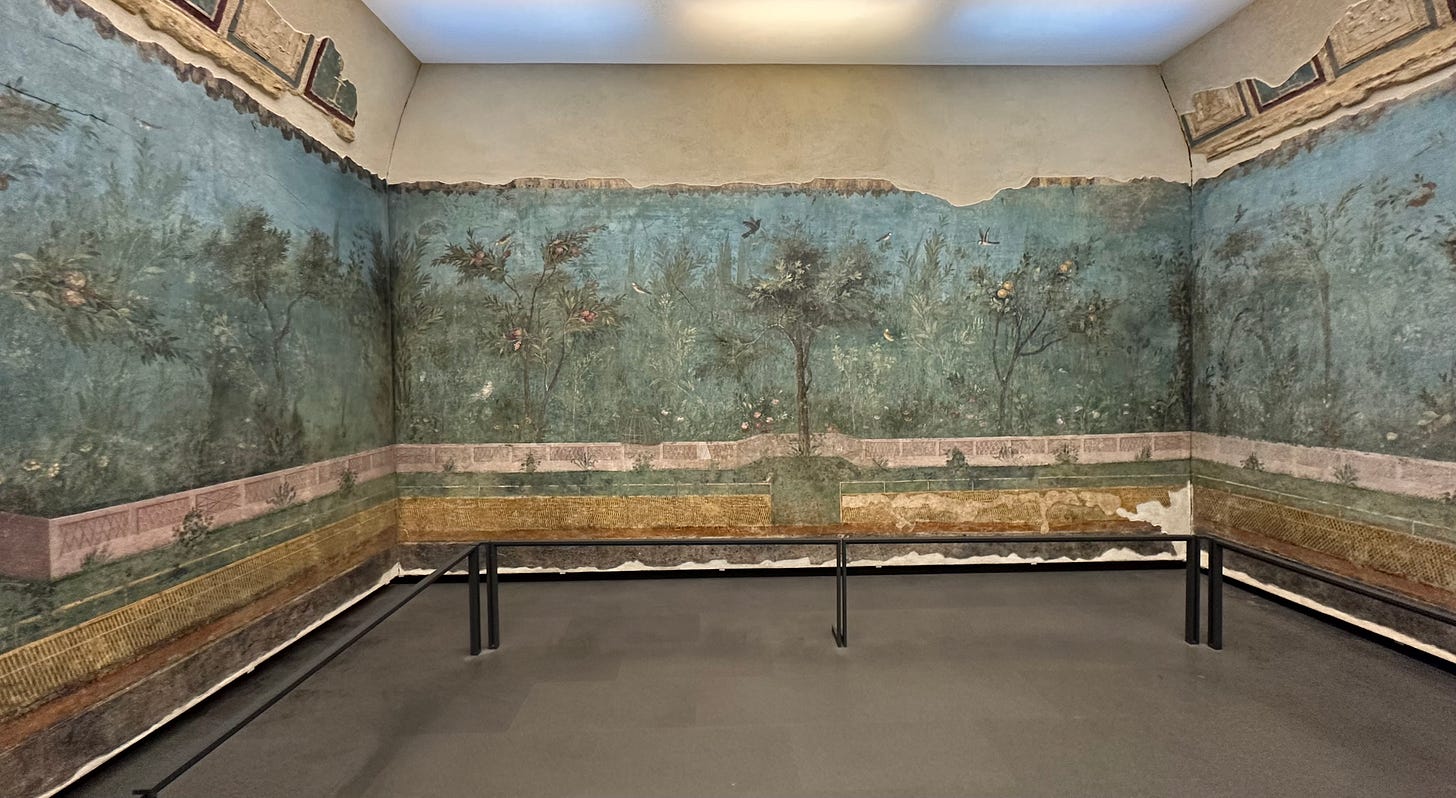
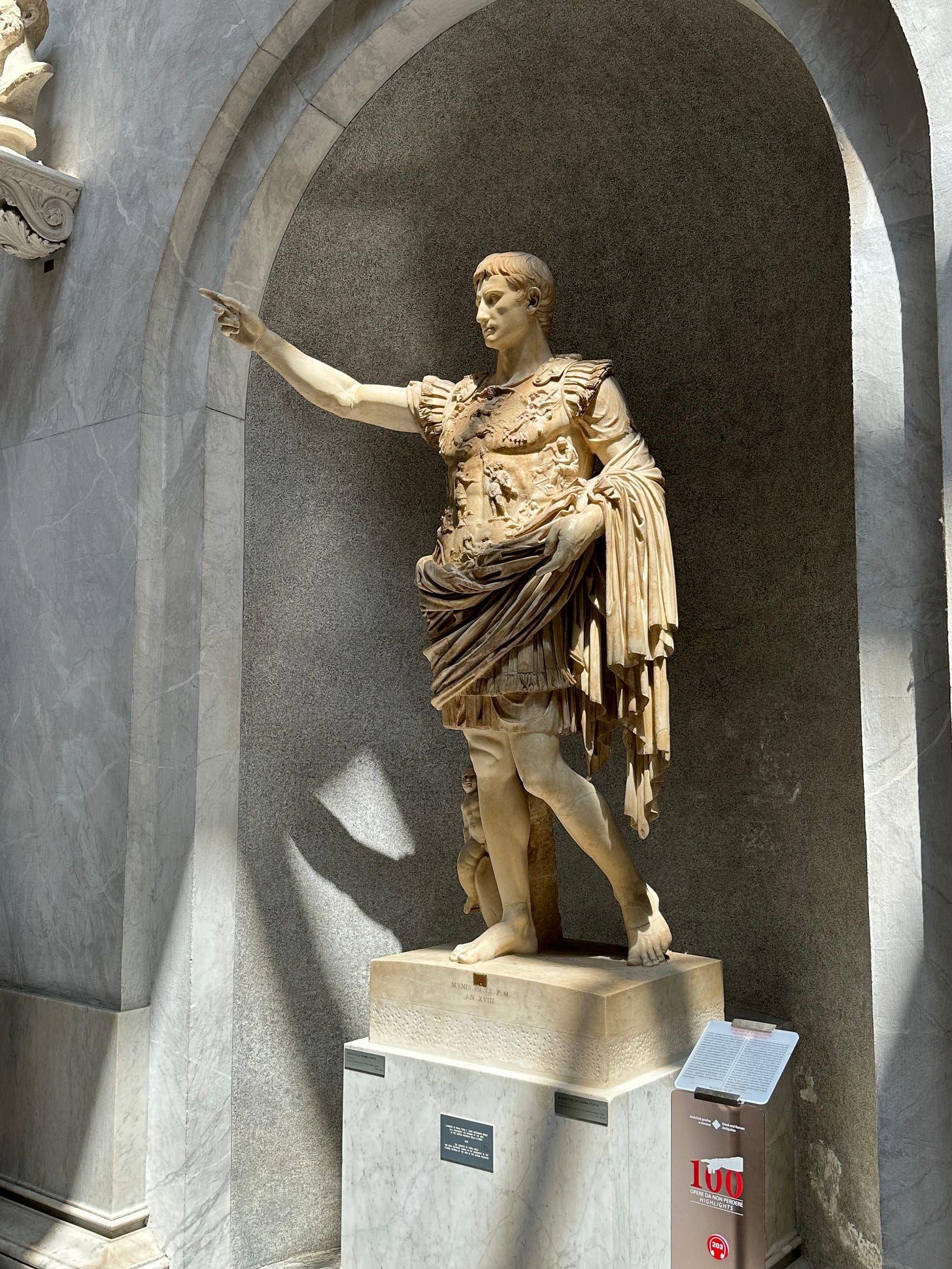

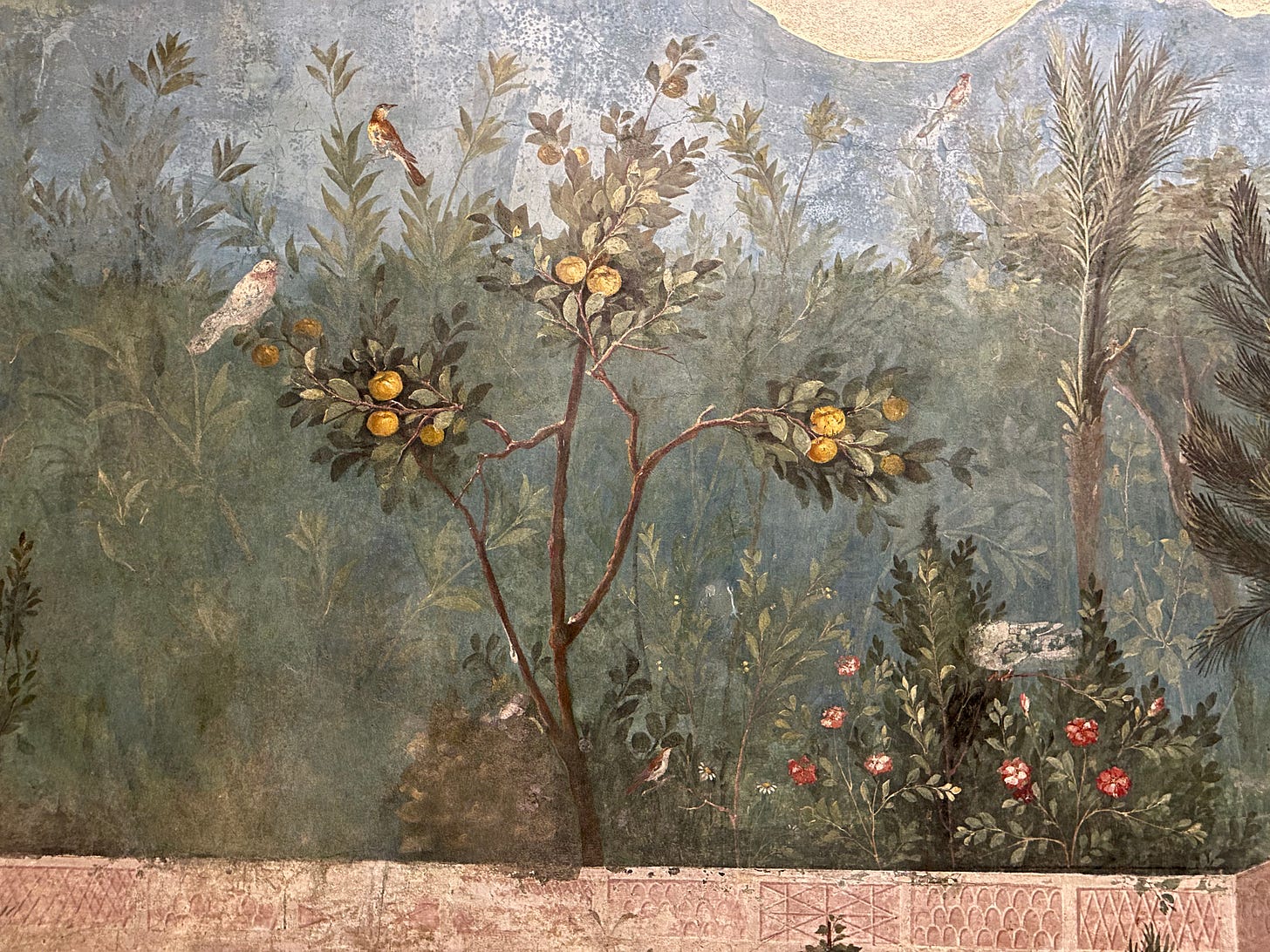
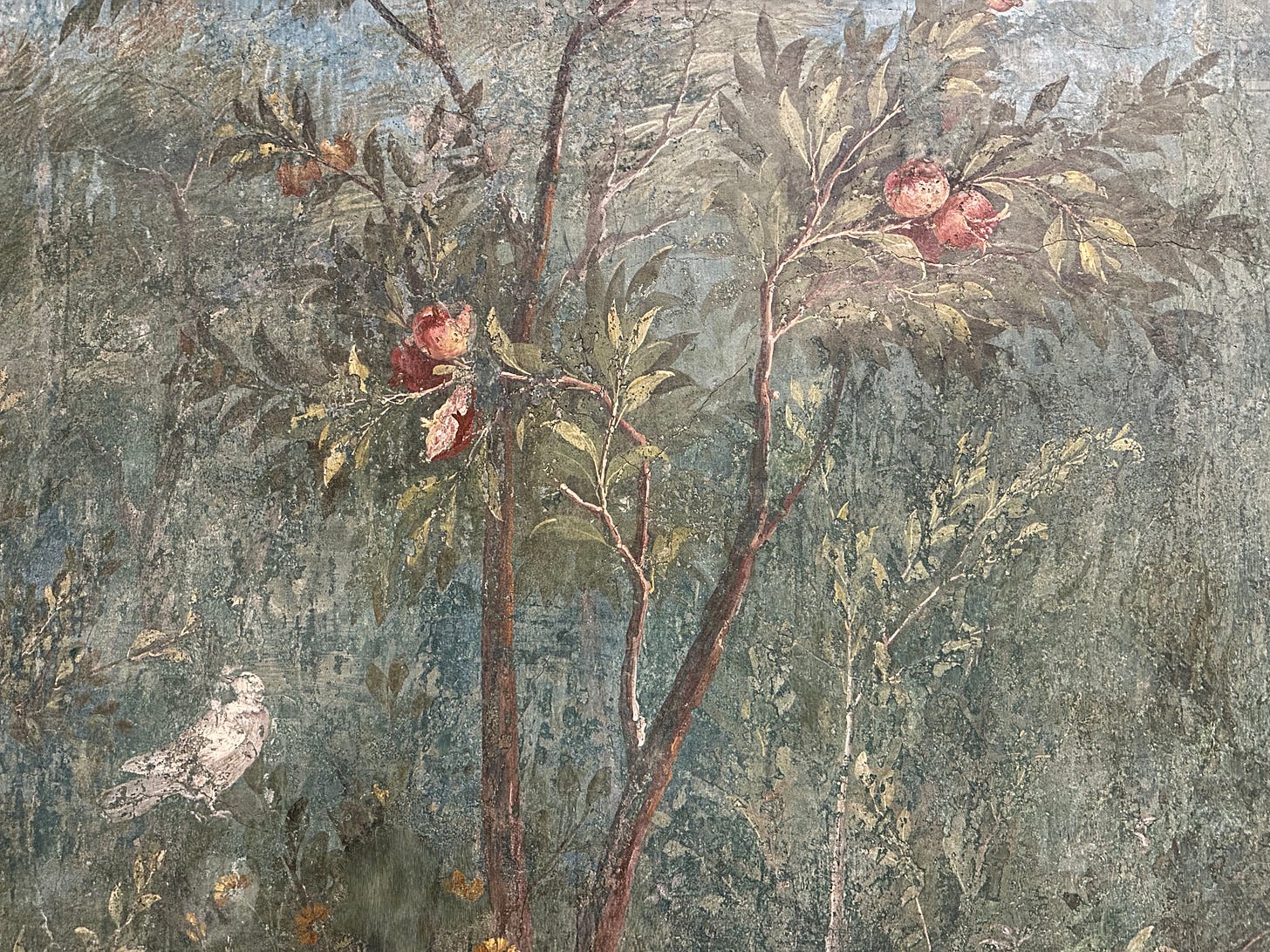
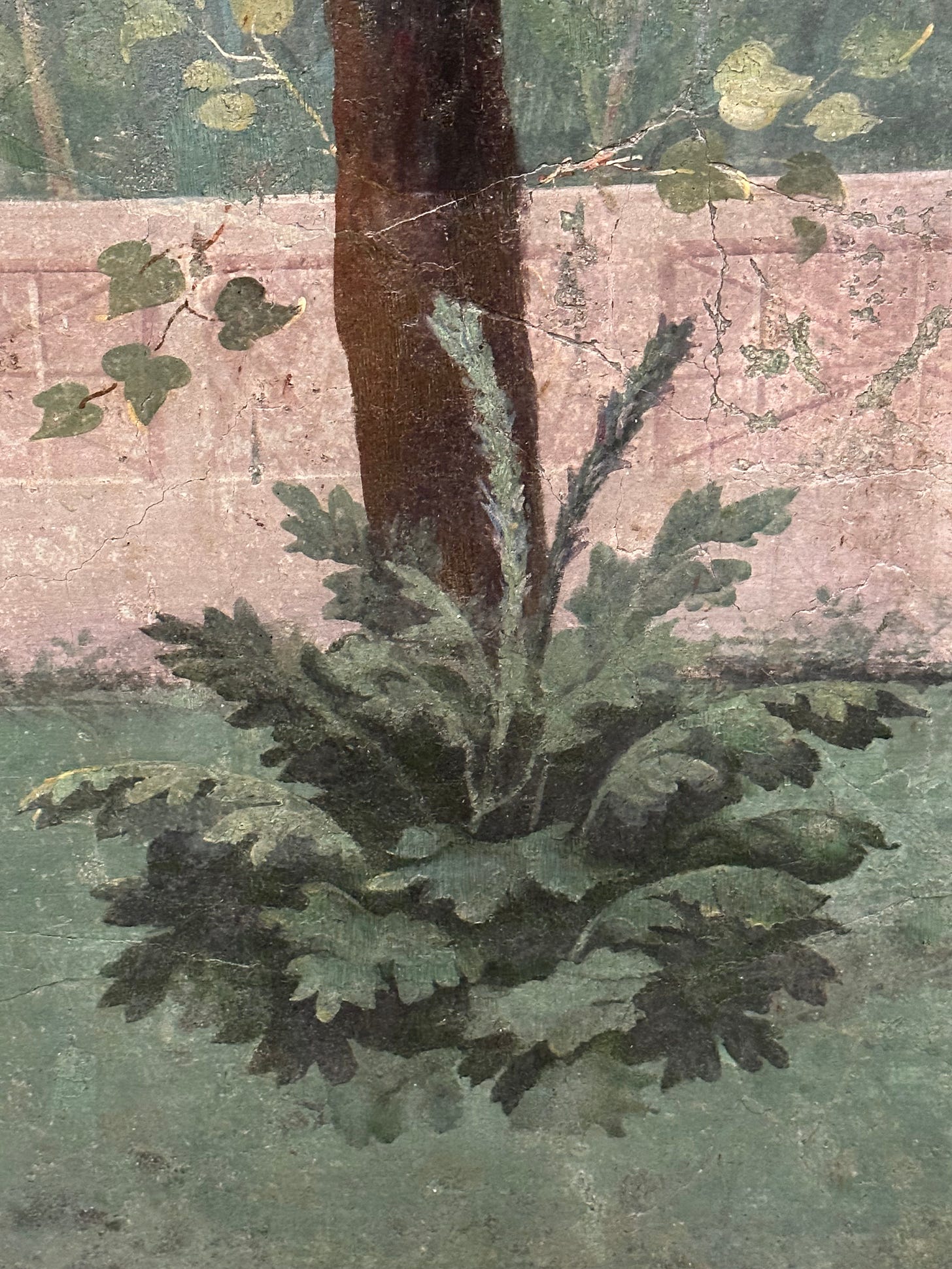

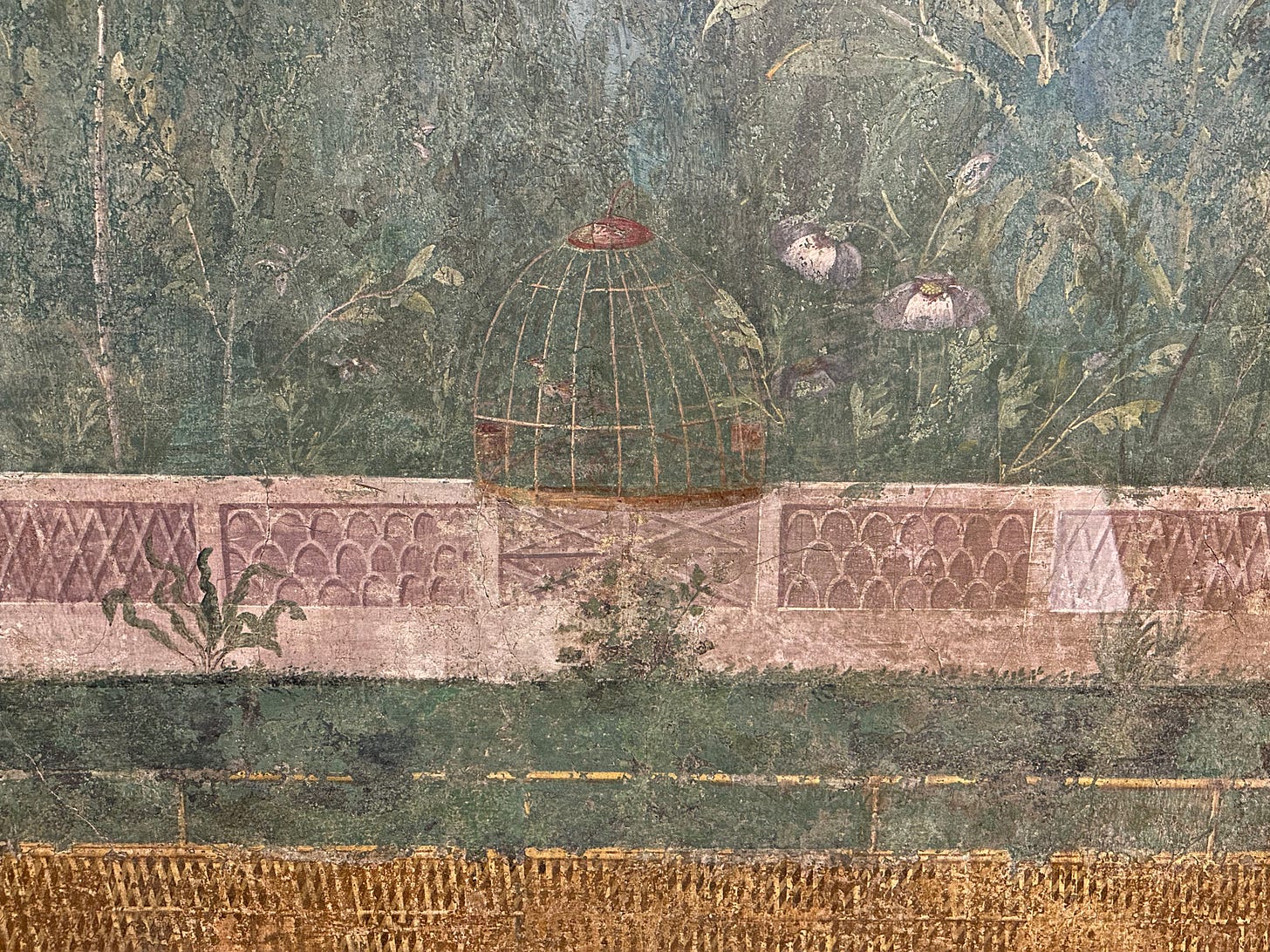
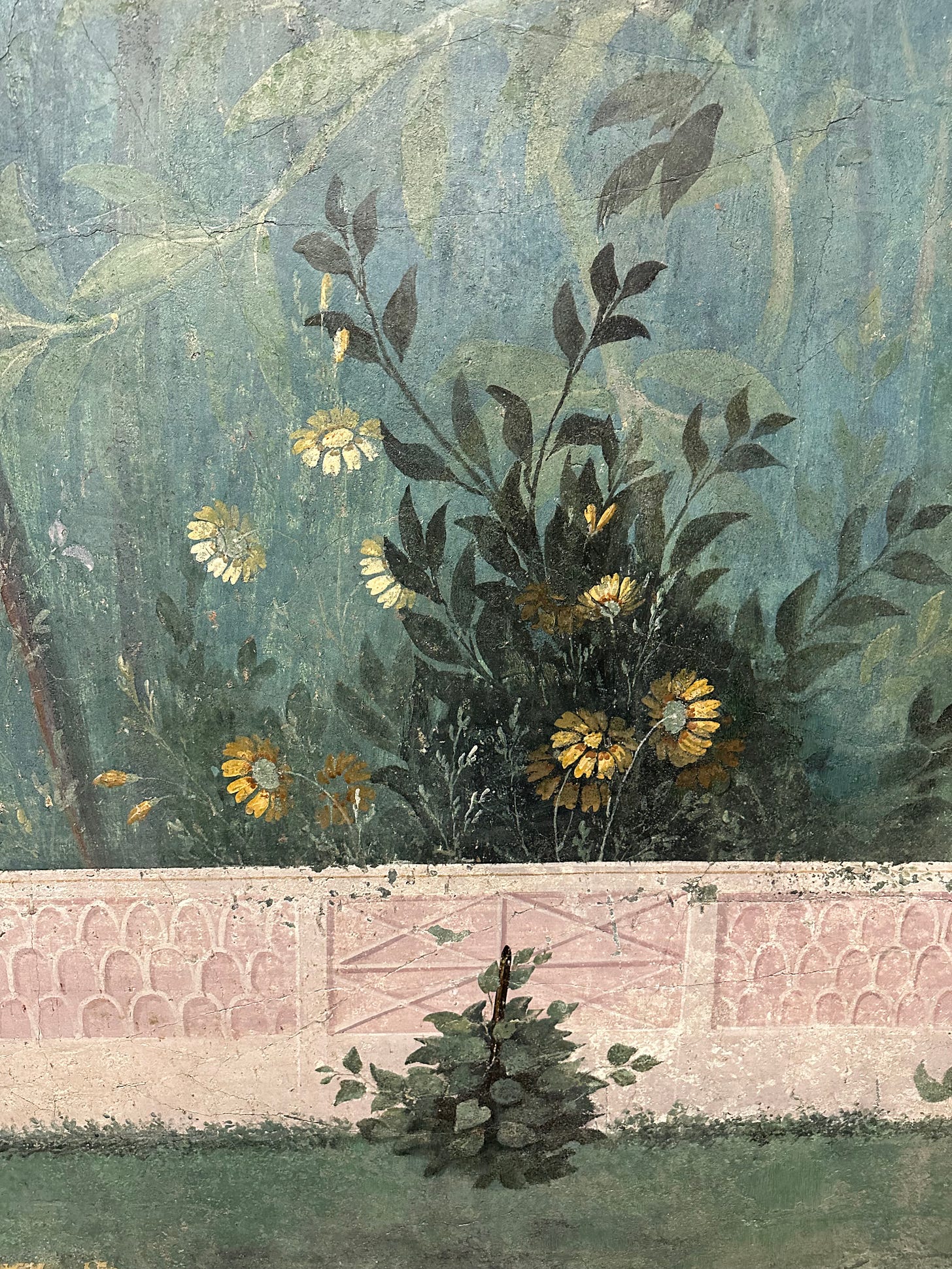
These frescos are stunning!
Oh, thankyou for this post... it's' my favourite place and I too had it to myself. Best regards from Judy